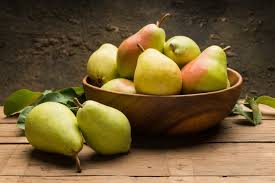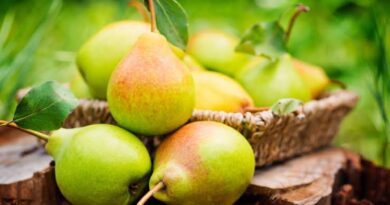How to Grow and Care for Pumpkin Fruit
Pumpkin is a big, orange fruit that many people enjoy. It grows on vines and has a thick, hard skin. Inside, there are seeds and soft, tasty flesh. People use pumpkins in various ways, and they have been a part of our lives for a long time.
One common use of pumpkin is in cooking. People make delicious dishes like pumpkin pie, pumpkin soup, and roasted pumpkin. The flesh is sweet and can add a special flavor to meals. Some even make pumpkin-flavored treats, like cookies and muffins.
In addition to being tasty, pumpkins are also popular during a special time of the year—fall. Many people carve faces on pumpkins to create jack-o’-lanterns for Halloween. It’s a fun tradition that brings smiles to faces, especially when these glowing pumpkins light up the night.
Pumpkins are not just for eating and decorating; they are also healthy. The flesh is rich in vitamins and minerals, making it a nutritious choice. Some people even use pumpkin as a base for smoothies or incorporate it into their diet for its health benefits.
Beyond the kitchen, pumpkins have found their way into other aspects of life. Some use pumpkin as a symbol of the changing seasons. It’s a sign that autumn has arrived, and the leaves are turning vibrant colors. Pumpkin patches become popular places for families to visit, picking their pumpkins directly from the fields.
Pumpkins are also important in some cultures and traditions. They might be part of festivals or rituals, symbolizing abundance and harvest. The versatility of pumpkins makes them a unique and valued element in various aspects of life.
Additionally, pumpkin is not just a simple fruit; it’s a versatile and beloved part of our lives. Whether enjoyed in delicious recipes, used for festive decorations, or embraced as a symbol of autumn, pumpkins bring joy and flavor to our world.
Read Also: All You Need To Know About The Pitbull Terrier Dog Breed
How to Grow and Care for Pumpkin

Growing pumpkins can be a rewarding experience, whether you have a spacious backyard or just a small garden. Follow these simple steps to nurture your pumpkins from seeds to harvest:
1. Choose the Right Seeds: Select pumpkin seeds based on your preferences. There are various types, including traditional orange pumpkins, miniature varieties, and even decorative ones. Make sure the seeds are fresh for better germination.
2. Planting: Plant pumpkin seeds directly in the soil when the danger of frost has passed. Create small mounds and plant several seeds in each, as pumpkins thrive in groups. Ensure the soil is well-drained and receives plenty of sunlight.
3. Watering: Pumpkins need consistent watering, especially during dry spells. Water the plants at the base to prevent fungal issues on the leaves. Be mindful not to overwater, as this can lead to root rot.
4. Fertilizing: Use a balanced fertilizer when the plants begin to develop. Follow the recommended dosage on the fertilizer package. Too much nitrogen can result in excessive vine growth with fewer fruits.
5. Mulching: Apply a layer of mulch around the pumpkin plants to retain moisture, suppress weeds, and regulate soil temperature. This helps create an optimal environment for pumpkin growth.
6. Support for Vines: As pumpkin vines grow, they can spread across the ground. Placing a layer of straw or using trellises can help support the vines and prevent the pumpkins from resting directly on the soil.
7. Pollination: Pumpkins require pollination to produce fruit. Bees are excellent pollinators, so encourage their presence in your garden. If needed, you can hand-pollinate by transferring pollen from the male flowers to the female flowers.
8. Pest and Disease Control: Keep an eye out for pests like aphids and squash bugs. Natural remedies or organic pesticides can help control infestations. Additionally, regularly inspect the leaves for signs of diseases, and promptly treat any issues.
9. Harvesting: Harvest your pumpkins when they reach their mature size and have a deep, consistent color. Cut the stem, leaving a few inches attached to the pumpkin. Handle them carefully to avoid damage.
10. Storage: Store harvested pumpkins in a cool, dry place. Proper curing can enhance their flavor and extend their shelf life. Check for any signs of decay and use damaged pumpkins first.
By following these simple guidelines, you can successfully grow and care for pumpkins, enjoying a bountiful harvest and the satisfaction of cultivating these versatile fruits in your own garden.
Read Also: Bull Terrier Dog Breed: Description, Health, Origin and Care Guide
Uses of Pumpkin

Pumpkins have a variety of uses, extending beyond just being a tasty ingredient in pies. Here are some diverse applications for pumpkins:
1. Culinary Delights:
Pumpkin Pie: A classic dessert during the fall season, loved for its sweet and spiced pumpkin filling.
Roasted Pumpkin Seeds: A nutritious snack, pumpkin seeds can be seasoned and roasted for a crunchy treat.
Pumpkin Soup: Warm and comforting, pumpkin soup is a delicious option, especially in cooler weather.
2. Decorative Jack-o’-Lanterns:
Halloween Tradition: Carving pumpkins into spooky or creative designs adds a festive touch to Halloween celebrations.
Festive Displays: Decorate your home or garden with carved or uncarved pumpkins to evoke a seasonal atmosphere.
3. Nutritional Benefits:
Healthy Eating: Pumpkin flesh is rich in vitamins A and C, fiber, and antioxidants, contributing to a nutritious diet.
Smoothies and Baked Goods: Incorporate pumpkin into smoothies, muffins, and pancakes for a nutritional boost.
4. Beauty and Skincare:
Face Masks: Pumpkin is known for its skin-friendly properties; create homemade face masks for a natural skincare routine.
Body Scrubs: Pumpkin can be used in DIY scrubs to exfoliate and moisturize the skin.
5. Seasonal Decor:
Centerpieces: Hollowed-out pumpkins can serve as charming centerpieces for tables and mantels.
Wreaths and Garlands: Dried pumpkin slices or mini pumpkins can be used in crafting festive decorations.
6. Pumpkin Planters:
Creative Plant Containers: Hollowed-out pumpkins make unique and temporary plant containers for seasonal flowers or succulents.
7. Cultural and Traditions:
Harvest Festivals: Pumpkins often play a role in various harvest festivals, symbolizing abundance and prosperity.
Ceremonial Uses: In some cultures, pumpkins hold significance in rituals and ceremonies.
8. Animal Feed:
Livestock Feed: Pumpkins can be used as supplemental feed for animals, providing them with additional nutrients.
9. Art and Crafts:
Painting and Decorating: Un-carved pumpkins can be painted or decorated for art projects or as part of DIY home decor.
Seed Art: Pumpkin seeds can be utilized in crafting, such as making jewelry or incorporating them into artistic projects. From the kitchen to the garden, and even in the realm of beauty and decoration, pumpkins offer a versatile range of uses that can add flavor, creativity, and nutritional value to various aspects of life.
The Benefits of Pumpkin

Pumpkins offer a range of benefits, from nutritional advantages to creative and practical uses. Here are some notable benefits of incorporating pumpkins into your life:
1. Nutrient-Rich: Pumpkins are a good source of essential nutrients, including vitamins A and C, potassium, and fiber. These contribute to overall health and well-being.
2. Antioxidant Properties: The presence of antioxidants in pumpkins helps combat oxidative stress in the body, potentially reducing the risk of chronic diseases.
3. Weight Management: With its high fiber content and low-calorie profile, pumpkin can be a satisfying addition to meals, aiding in weight management by promoting a feeling of fullness.
4. Eye Health: The beta-carotene in pumpkins is converted into vitamin A in the body, supporting eye health and potentially reducing the risk of age-related macular degeneration.
5. Immune Support: The combination of vitamins and antioxidants in pumpkins may contribute to a strengthened immune system, helping the body defend against illnesses.
6. Skin Benefits: Pumpkin contains nutrients like vitamin C and zinc, promoting healthy skin. DIY masks and skincare products with pumpkin can hydrate and nourish the skin.
7. Heart Health: The potassium content in pumpkins may contribute to heart health by helping to regulate blood pressure levels.
8. Digestive Health: The fiber in pumpkins supports digestive health by promoting regular bowel movements and aiding in the prevention of constipation.
9. Versatile Culinary Uses: Pumpkins add a sweet and distinctive flavor to a variety of dishes, offering a tasty way to diversify your diet and enjoy nutrient-packed meals.
10. Sustainable Practices: Pumpkin seeds can be roasted and enjoyed as a snack, providing a sustainable source of protein and healthy fats.
11. Seasonal Decor and Traditions: The use of pumpkins in seasonal decorations and traditions adds a festive and joyful element to holidays, fostering a sense of community and celebration.
12. Environmental Impact: Pumpkins are biodegradable, and their scraps can be composted, contributing to sustainable waste management practices.
From promoting physical health to enhancing culinary experiences and cultural traditions, pumpkins offer a multitude of benefits. Whether enjoyed in meals, used for skincare, or incorporated into creative projects, the versatility of pumpkins makes them a valuable addition to various aspects of daily life.
Read Also: Definitions, Concepts and Types of Sewage and Sewerage









